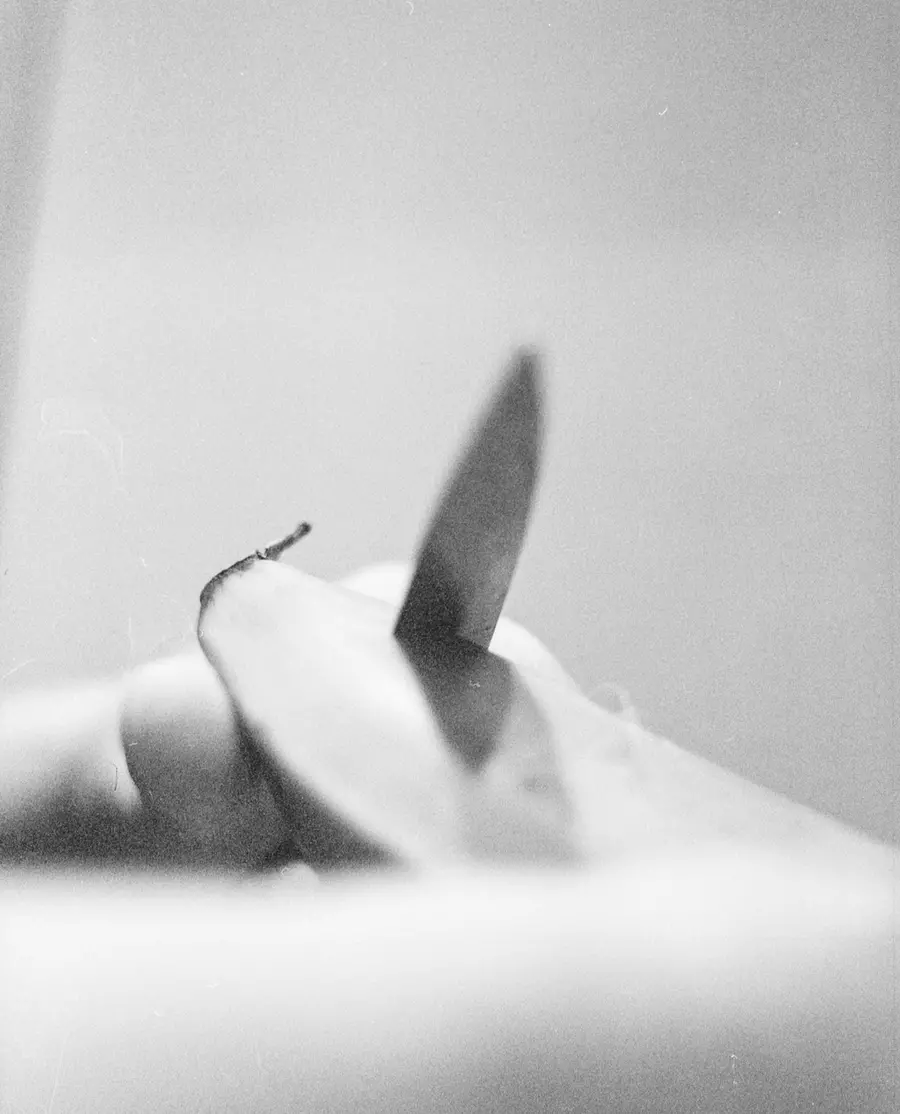Develop participant, Abigail Evans shares a story behind her photograph Knife and Thumb.
This image, Knife and Thumb, shows my mum's hands, which we share, as she peels the tough skin of the plantain to prepare an inherited dish. I love all the softened points and condensed planes, and the proximity we feel looking at it. It reflects my natural photographic inclination to capture quiet moments, abstracted and fragmented and has become part of a larger constellation of images acting as a sort of self-portrait.
My Guyanese Granddad shared little of his culture outside of food, but in introducing me to the food of his home he was exuberant: Indian sweet treats such as Gulab jamun; papaya and custard apples bargained for at Brixton market, that he spoke of being free-growing on Wakenaam; and, finally, what he called "jungle food" which involves fried plantain, dumplings, coconut-y sauce and often fresh fish. He was a challenging cook to learn from, wanting to get on with it, or sneaking ingredients in, and mostly he just loved surprising you with a fully prepared steaming plate instead. The day of this image was a few years after he died and, inspired by a shared hankering for this meal, my mum and I cobbled together our memories of the recipe and feasted.
The photo was taken at home with the largest (and heaviest) camera I’ve personally used, the Mamiya RZ67, with its signature waist-level viewfinder which I refuse to actually hold that low, instead, I’m constantly stooping down whilst lifting and angling it up towards my face. In this case, in order to be level with my mum’s hands, I was also balanced on a stool. It feels important to me, as much as possible, to be holding the camera, so that the resulting composition is captured from a perspective that has a relation to the body and a sense of proximity too, especially when I’m exploring emotional, subjective themes.
I love looking through its lens. The RZ67 is well known for its sharpness but I particularly enjoy using it in combination with a shallow depth of field. It is the softness of this image that makes it resonate with me so much, especially the blur of the knife’s point, which could be far more aggressive and dominant but instead gives way to the plantain’s more organic form. It results in the focus being much more on how the various planes interact and intersect within the flattened scene, as we try to distinguish physical form, shadow and human presence.
This softness is continued through its low contrast printing. It was one of the first images I really crafted in the darkroom, and having shot with a really high-speed film there was great capacity for experimentation if I leant into the grain. At the time, I was considering how exposure could be utilised to create a far softer image, prompted by artists such as Feiyi Wen; in particular how it could be manipulated within the printing process to garner different emotional effects. The tenderly overexposed rendering of this shared moment, therefore, distances the photograph from the documentary and acts far more expressively and abstractly to convey a sense of feeling.
- Abigail Evans
